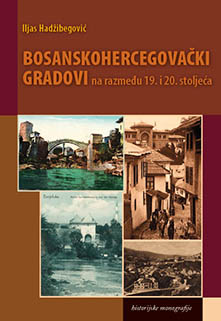
We kindly inform you that, as long as the subject affiliation of our 300.000+ articles is in progress, you might get unsufficient or no results on your third level or second level search. In this case, please broaden your search criteria.

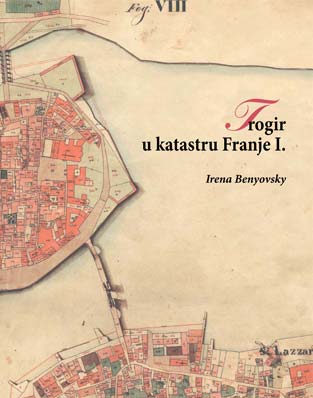
The first half of the 19th century in Dalmatia is marked out by the rule of Francis I. Austrian strategic interests resulted in a long-prepared reorganization of the structure of the state which brought about significant changes. Traditional commercial and fiscal relations were transformed. On 23 December 1817, Francis I issued the “Patent for the introduction of a stable cadastre” (Patent uber die Einfuhrung des stabilen Katasters), by which a general property tax was introduced in the Monarchy. Work on the cadastre of Dalmatia was begun after the nomination of Governor Franjo Tomašić in Zadar (the capital of Dalmatia) in 1822 and completed in 1838. Immediately after the triangulation was done in 1838, the original cadastral plans were deposited in the Central Archives in Vienna. Today, copies of these can be found in the State Archive in Split under the title “Archive of maps of Istria and Dalmatia.”
More...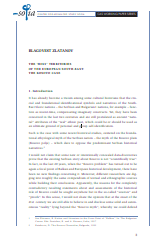
The homeless dogs debate presents an interesting phenomenon. The heated exchanges, the arguments, the examples used often shift the attention away from animals to humans, social groups, models for structuring society.
More...
The present study is intended to provide a comprehensive assessment of the status of women in rural areas in the country as compared with the status of their male counterparts in rural areas and with the population of both men and women in urban areas, thus providing a baseline with which to design concrete measures leading to the empowerment of women in rural areas.The study provides an analysis of existing legislative and policy frameworks and explores the extent of the social exclusion of women in rural areas, including their exclusion from the labour market, from local public and social life, and from participation in local decision-making processes. In addition to voicing the needs and challenges of women in rural areas and highlighting the gaps that need to be addressed to improve their status, the study identifies the available opportunities to challenge the barriers these women face.This study thus encourages policy-makers to take stock of the disadvantages and challenges experienced by women in rural areas but also to look beyond these impediments and explore the potential these women have for their own advancement and for the development of their communities. The study offers insights into the needs and concerns of rural women and encourages local as well as national policy-makers and decision-makers to review community development from the perspectives of women in rural areas. It calls for local and national policies to be adapted to the realities faced by these women in order to remove the barriers they face on a daily basis. Last but not least, the study underlines the urgent need to ensure that rural women are included in key decision-making processes.
More...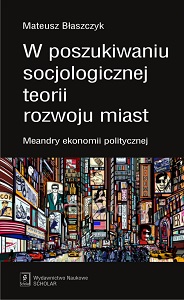
W jaki sposób globalizacja zmieniła trajektorie rozwoju miast? Na czym polega współczesna konkurencja na światowym rynku miejsc? Jak w dobie postfordyzmu kształtują się relacje między gospodarką, polityką i mieszkańcami miast? Dlaczego kwestie kultury, lokalnej tożsamości czy konsumpcji stają się centralnymi zagadnieniami miejskich polityk? Czy „kreatywność” rzeczywiście jest kluczem do sukcesu i prosperity miasta? A w końcu: kto dziś posiada "prawo do miasta"? Między innymi odpowiedzi na te pytania poszukuje autor w niniejszej książce.
More...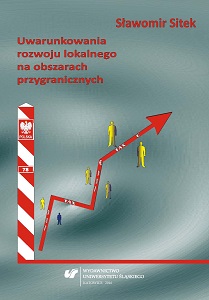
The paper looks at the course of the process of local development in changing systemic and economic conditions in specific zones, namely border regions. Local development is one of the aspects of territorial development that is implemented at the municipal and administrative district level. It is expressed through favourable changes, the source of which are, in particular, local natural and material resources and the characteristics of the local community that are conducive to the development. In the result of these changes the needs of the residents are more fully addressed, and their welfare improved. It includesa number of factors relating to the social, economic and spatial sphere. What is a new determinant of the local development in border regions is the integration process causing the „erosion“ of the borders. This applies to intra-EU borders, because of the fact that at the same time on the external border a noticeable sealing process takes place, and this necessitates verification of theoretical concepts explaining the mechanisms of the development in these areas. The paper is aimed at the identification of the determinants of the local development of Polish border regions, with a particular focus on the role and function of the border as a factor modelling this process. The research problem consists in the identification of factors and barriers to the local development in the border regions, with the emphasis on the elementspointing to the specificity resulting from the neighbourhood of the border. The methodology of the paper is based on a compilation of quantitative methods, which have been supplemented with a range of qualitative information. The specificity of the conditions of the local development in the border regions has been tested in the three types of neighbourhood:• the border region of A type – between the countries of the so-called ‘the old’ EU and Poland, in this case represented by the Germany-Poland border (PL-DE)• the border region of B type – between the countries of the so-called ‘the new’ EU, represented by the border regions of Poland-the Czech Republic (PL-CZ), Poland-Slovakia (PL-SK) and Poland-Lithuania (LT-PL)• the border region of C type – that constitutes an external border of the EU, represented by the border regions of Poland-Belarus (PL-BY), Poland-Ukraine (PL-UA) and Poland-Russia (PL-RU).Accordingly, the area of the research comprised the municipalities and administrative districts immediately adjacent to the state border. The total number of the territorial units included in the study is 164 municipalities and 56 districts.In accordance with the aspects of local development, a comprehensive inspection of the theories of social, economic and spatial development was carried out, and subsequently the concepts whose assumptions would be adequate to the conditions observed in the border regions were sought amongst them. The assessment of the determinants in the individual border regions allowed establishing where the conditions are the most favourable for the development. Moreover, it had been assumed that together with an increasing distancefrom the border its influence decreases, and also that a greater number of border crossings positively stimulates the process of local development. In addition, the influence of the local government, Euro-regions and the EU programmes on the condition in the border regions was verified.The paper presents the change in the character of the border and the circumstances surrounding its formation, with particular emphasis on the period after 1989. It also comprises a parametric evaluation of the stage of the development of the border regions in the system of the municipalities and administrative districts, and the correlation between its condition and the existence of the border crossing and the type of border region.The participation of the border regions in the demographic, financial and economic potential of the country was diagnosed, along with the dynamics of the changes in this field in the years 1995–2015. In addition, the issue of macro-economic differences between the countries was discussed. The impact on the local development was also investigated on the basis of the level of trade and exchange, differences in prices, differences in the condition of labour and real estate markets. In the social sphere, the attention was paid to the multiculturalism of the border regions and the issues of social activity. What was emphasised was the importance of tourism and the role of EU programmes designed for the border regions.It was found out that the conditions for the development of the local Polish border regions are diverse, which results from the very character of the border. The overall assessment of the determinants of the development is positive. The actions of the state and the EU aimed at integration are supported with numerous measures focused on the cross-border cooperation. In the border regions, there are still favourable economic differences that allow obtainingbenefits of the exchange. It has been confirmed by a growing level of expenditure in the border regions and a greater number of travellers. Further development requires developing a common identity of the border regions originating from the common ground of the cultures and nations. The community of goals and further understanding is the basis of trust, which constitutes the foundation of social capital. More and more plentiful is the evidence that the inhabitants of these regions are beginning to see the border as an opportunity for development, not as a barrier to it. The contact between the sides of the border is also easier, which is the result of the reduction in its formal rigor and the development of technical infrastructure. The border region of A type is the best developed, whereas the rate of changes indicates that its advantages over the other border regions are decreasing. The most favourable conditions for local development in terms of economy prevail in the regions adjacent to the borders with Germany and Ukraine, while as for the social sphere – in the regions bordering with Slovakia and the Czech Republic, and slightly less favourable at the border with Lithuania. The worst situation (in terms of both of the aforementioned fields) was observed at the border with Russia and Belarus.
More...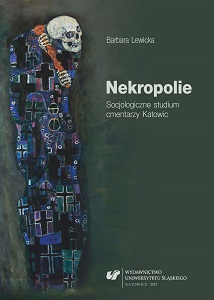
The book entitled Necropolis. Sociological Study of the Cemeteries of Katowice, is an attempt to description of the burial spaces on the example of one city. Cemeteries shall be treated as a cultural text, reproduced in various forms of social practices. Reading this cultural text allows to reconstruct contemporary roles and significance of urban cemeteries, and describe construction of the graveyards and show typical activities undertaken in their spaces.The opening chapter clarifies the social history of the funeral spaces of Europe described terms of in four stages of development. The further part is devoted to necropolis of the particular city – Katowice. The author makes a description of the form, shape and infrastructure of cemeteries and reminds history of the city. Another part of the work is a theoretical debate on urban issues, including emphasis on urban sociology. The continuum: space – the city – a place – non-place is explained, as well as the functional division of urban space. Than graveyards are described in terms of various sciences. In this part of the book preliminary analysis of research on functions of Katowice burial spaces are related. A consequence of above is construction of the typology of modern graveyards functions in sociological terms. The rest of the book is devoted to the analysis and interpretation of results of empirical studies (combining both quantitative and qualitative research methods) carriedout in Katowice. It begins with description of burial spaces treated as separated areas of the city; the second aspect of the analysis is a description of cemeteries’ structure; another is focused on the functioning of graveyards; the last one specifies the meaning of the cemeteries for the residents of the city.This approach allows to recreate multi-faceted image of urban cemeteries. Firstly, image of necropolis with permanent and temporary components of the visual universe is analyzed. Secondly, events that took place within the cemeteries and practices associated with visiting the graveyards are described, as well as the way of functioning of cemeteries – their daily, monthly and yearly rhythm. Thirdly, answer to the question about the meaning and place of burial spaces in the minds of Katowice residents is given.Among the most important conclusions of work it should be noted that the residents of Katowice believe that burial places have important socio-cultural role. Cemeteries are described as important, meaningful and long-lasting spaces; areas of interaction and symbolic exchange. It is because, among other things: the universality of visits to cemeteries, what is associated with their rhythm of functioning; a multitude of activities undertaken in cemeteries (not only those related to its first roles); an affection to the image of tombstones; awareness that cemeteries are not only a places of remembrance for everyone who buried their relatives there, but also for the city, region or even the country; the conviction that cemeteries should be show the youngest, to familiarize them with the historical heritage and create a kind ofsymbolic attachment with the ancestors.
More...
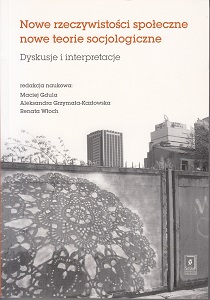
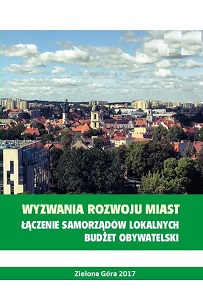
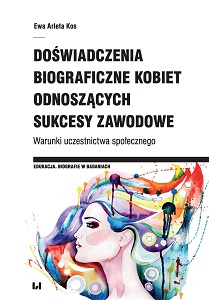
The study presents pedagogically oriented qualitative research, the subject of which are biographical experiences of women who have achieved professional success (“documented success”, determined by social recognition expressed in giving a managerial (influential) position). I suppose that coming to occupied positions, these women had to be more active than average people. It is worth emphasizing that the research group was included women who have achieved professional success. However, from the perspective of the issue covered research is not an important career process understood as a high achievement professional position, or getting better and better jobs, but an active attitude women’s life. An active attitude of life is at the same time an effect of shaping and influencing the conditions environmental.
More...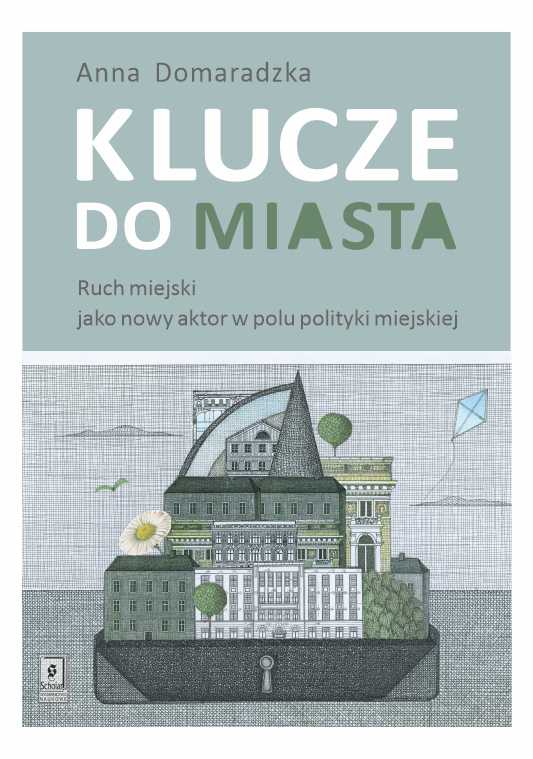
Klucze do miasta to książka o nowej odmianie społecznej aktywności i jej roli w kształtowaniu rozwoju polskich miast. Miasto pełni tu funkcję scenografii, bo głównymi aktorami są „wkurzona mieszkanka” i „sfrustrowany sąsiad”, którzy z widowni postanowili przenieść się na scenę, by zmienić zasady miejskiej gry. To, czy ich wspólna aktywność stanie się kluczem, czy tylko wytrychem do miasta, zależy zarówno od struktury możliwości politycznych, jak i wytrwałości oraz poczucia odpowiedzialności za scenariusz miejskiego spektaklu. Autorka stara się wyjaśnić falę aktywności oddolnej mieszkańców polskich miast, sytuując ją w szerszym kontekście międzynarodowych ruchów prawa do miasta. Szkicuje mapę aktorów pola polityki miejskiej i relacji między nimi, aby lepiej zrozumieć przemiany narracji i stylu miejskiego zarządzania. Model teoretyczny opisuje przemiany polityki miejskiej jako strategicznego pola działania czterech głównych aktorów – władz lokalnych, inwestorów, projektantów i ruchów miejskich.(…) Monografia Anny Domaradzkiej dostarcza bardzo interesujących obserwacji o tym jak rodzi się fenomen aktywizmu miejskiego. (…) Szczególnie ciekawe jest usytuowanie problematyki ruchów miejskich na stykusfer publicznej, prywatnej i obywatelskiej oraz wykorzystanie teorii pól, która pozwala na pokazanie nowych aspektów społecznego wytwarzania ruchów miejskich w Polsce. Książka powinna wzbudzić zainteresowanie zarówno badaczy miasta, jak i tych, którzy miasto zmieniają. Tym bardziej, że Autorka pisze, unikając branżowego żargonu. Nie będzie nużąca dla osób spoza urban studies.
More...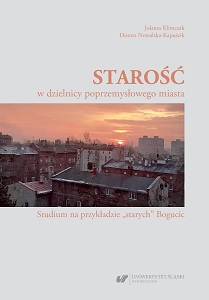
The research conducted by the authors on the situation of the elderly in one of the post-industrial districts of Katowice showed that degree of satisfaction of specific needs is diverse depending on their type, therefore, despite actions taken by organizational and non-governmental units and other institutions for senior environment, criterion of deficit in the sphere of interpersonal contacts and active participation in social life has not always been met.
More...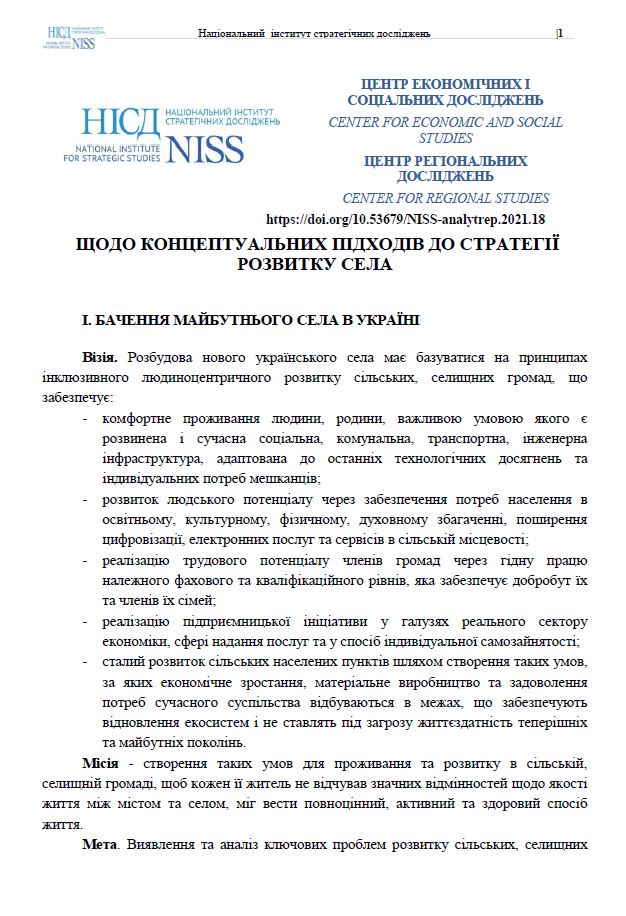
VISION: The development of a new Ukrainian village should be based on the principles of inclusive human-centric development of rural, urban communities, which provides: *) comfortable living of a person, family, an important condition of which is a developed and modern social, communal, transport, engineering infrastructure, adapted to the latest technological advances and individual needs of residents; *) development of human potential through meeting the needs of the population in educational, cultural, physical, spiritual enrichment, dissemination of digitalization, electronic services and services in rural areas; *) realization of labor potential of community members through decent work of appropriate professional and qualification levels, which ensures the well-being of them and their family members;*) implementation of entrepreneurial initiative in the real sector of the economy, services and individual self-employment; *) sustainable development of rural settlements by creating conditions in which economic growth, material production and meeting the needs of modern society occur within the limits that ensure the restoration of ecosystems and do not endanger the viability of present and future generations.
More...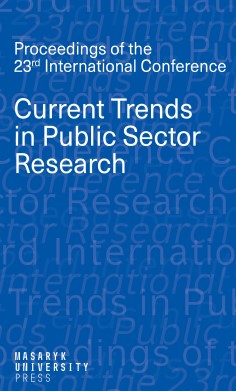
In this paper, we argue that a counter-balance is needed to metropolises, especially in small European countries. Rural areas and small towns are necessary and must remain economically viable from the point of view of public administration. The objective of the paper is to investigate the concept of nostalgianomics from the point of view of living preference in Slovakia. Using a new measurement scheme, we analysed the preferences of where people would like to live with a sample of almost 500 individuals and introduce a new term of nostalgianomics – a concept that nostalgic sentiment can be used as an economic and creative force as an incentive for investment and housing. In this paper, we focus especially on the area of living preferences and urban planning. Among the methods employed are questionnaire survey and basic statistical analysis. The main findings indicate that Slovaks prefer to live in smaller municipalities and in areas outside of large metropolitan areas – the attraction is driven by a nostalgic sentiment.
More...
Tourism industry includes more than 50 sectors and grows rapidly with technological developments. Communication technologies have become cheaper and widespread with globalization. as a result of this, the tourism industry become one of the main actors of international trade in line with the income they provide to countries. The increasing employment opportunities of the sector and the fact that it is in direct contact with other sectors emphasize the importance of tourism for countries. The tourism industry is one of the most vital sectors of the 21st century, with the employment opportunities it offers and the fact that it represents approximately one-tenth of the gross national product per capita of the countries. In the context of all these developments, the tourism sector has become the main source of income and employment for developing and developed countries. Therefore, the competitors of the players in the tourism sector based on the workforce have gone beyond being national to international limits. In these conditions, where countries try to gain a competitive advantage over each other, destinations try to attract visitors to their regions by adding new products and attractions. Globalization and technological innovations have not only enabled regions to stand out in social media or other communication channels, but also paved the way for more conscious customer experiences. At present’s tough working conditions, travel has become a necessity rather than a luxury and tourists have begun to seek different pursuits in different destinations. The tourism sector also does not want to stay behind this increasing importance and competition all over the world. Therefore, it offers alternatives that will satisfy the value-oriented tourism demands of today's consumers who are conscious and seeking diversity. This book is a multifaceted resource on the trends emerging in the tourism sector, which is gaining importance in the world economy in parallel with globalization and technological developments, and has been prepared by academicians who are experts in their fields. The book is an interesting study for professionals and scientists in the tourism industry, as well as for students who want to examine different tourism trends.
More...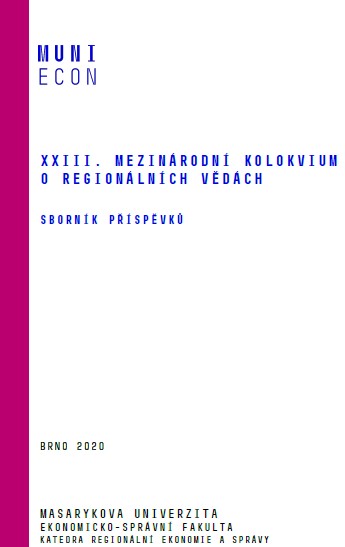
Location analyses usually assess urban and regional milieu from the perspective of investors. This demand side is rather important for location processes. Nonetheless, supply side embodying spatially differentiated location factors of particular territories is significant too. The objective of the article is to show factors that towns of the Czech Republic offer to potential investors on the one hand and factors that these towns deem as relevant for investors. The article leans upon the research that was accomplished in 2019. The whole text is supported by an extensive questionnaire survey. It is worth noticing location factors towns deem important for investors differ from these that are offered by towns to investors. Among the factors provided by individual towns to potential investors, so-called soft factors of location played a relevant role. This is compliant with contemporary modernisation tendencies shaping the qualities of space.
More...
The book examines the phenomenon of homelessness in Olomouc from several perspectives. The first is the view of the majority Olomouc society on homelessness and its homeless community. It is based on the analysis of data from previously conducted sociological surveys. The second is the view of the academic community of Palacký University on homelessness in Olomouc, which is based on a representative survey within the university. The third and main one is the view from within the homeless community itself. Based on qualitative interviews, the book presents the inner workings of the Olomouc homeless community, seeking to understand its internal social relations and attitudes towards the majority. The aim of the book is to present and understand how the majority thinks about the homeless, how the homeless community actually functions and how it perceives its surroundings. Without such a deeper understanding, a solution to the homeless problem in the city of Olomouc is hardly possible.
More...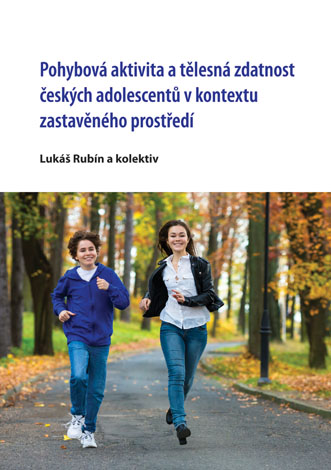
The aim of the study is to estimate the strength of associations between physical activity, physical fitness and the built environment among 11-19 year old adolescents living in the Czech Republic. The study includes 1745 participants from 2013-2016. Physical activity was measured with the IPEN Adolescent Questionnaire and a pedometer or accelerometer. Physical fitness was tested using the INDARES system report. Built environment was identified using the IPEN Adolescent questionnaire and possibly also using geographic information systems. Only 43% of adolescents met health recommendations for physical activity, 47% of individuals could be described as physically fit. Adolescents fulfilling the recommendation are more physically fit than individuals not fulfilling the recommendation, yet the relationship between physical activity and selected physical fitness indicators reaches low dependence.
More...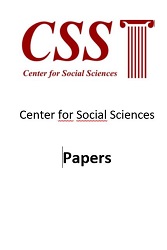
Using data from the Generations and Gender Survey for the cohorts born from 1926 to 1985 in Georgia, and the linear probability models of higher educational and ISCO 1-2 occupational attainment, I find the large ascriptive inequalities of life chances, which especially intensified for those born in 1976-85. Having parents with the lower socio-economic status, living in a family with the higher number of siblings, particularly brothers, residing in deprived regions at age 15, and selecting the non-prestigious fields of studies induced by social origin, negatively and significantly associate with life prospects. Although tertiary education serves mainly as the mediator of ascriptive factors, the latter also exert a direct effect on the occupational attainment. One of the reasons why the inequalities in life chances have increased in recent decades is the growing gap between educational expansion and occupational upgrade and the resultant inflation of credentials.
More...